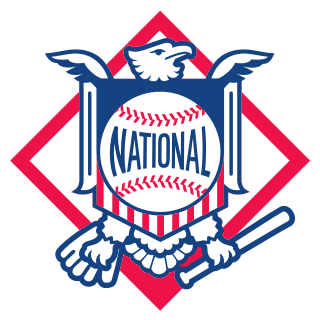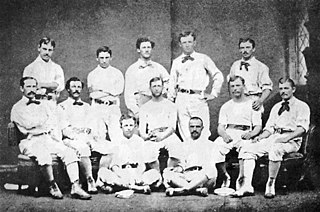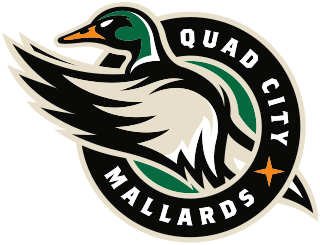
The Boston City Club (est.1906) of Boston, Massachusetts [1] focused on "the city of Boston and the problems of its growth." Founders included Louis D. Brandeis, Edward Filene, and Edmund Billings. [2]

The Boston City Club (est.1906) of Boston, Massachusetts [1] focused on "the city of Boston and the problems of its growth." Founders included Louis D. Brandeis, Edward Filene, and Edmund Billings. [2]

The National League of Professional Baseball Clubs, known simply as the National League (NL), is the older of two leagues constituting Major League Baseball (MLB) in the United States and Canada, and the world's oldest still existing professional team sports league. Founded on February 2, 1876, to replace the National Association of Professional Base Ball Players (NAPBBP) of 1871–1875, the NL is sometimes called the Senior Circuit, in contrast to MLB's other league, the American League, which was founded 25 years later and is called the "Junior Circuit".

The American League of Professional Baseball Clubs, or simply the American League (AL), is one of two leagues that make up Major League Baseball (MLB) in the United States and Canada. It developed from the Western League, a minor league based in the Great Lakes states, which eventually aspired to major league status. It is sometimes called the Junior Circuit because it claimed Major League status for the 1901 season, 25 years after the formation of the National League.

The New England Revolution are an American professional soccer club based in the Greater Boston area that competes in Major League Soccer (MLS), in the Eastern Conference of the league. It is one of the ten charter clubs of MLS, having competed in the league since its inaugural season.
The National Association of Professional Base Ball Players (NAPBBP), or known simply as the National Association (NA), was founded in 1871 and continued through the 1875 season. It succeeded and incorporated several professional clubs from the previous National Association of Base Ball Players (NABBP) of 1857–1870, sometimes called "the amateur association"; in turn several of its clubs created the succeeding National League of Professional Baseball Clubs. Later shortened simply to be called the National League, it was founded 1876, the earliest one half of modern Major League Baseball (MLB) in America, with the later competing American League of Professional Base Ball Clubs in 1901, known too as the American League.

William Ambrose Hulbert was one of the founders of the National League, recognized as baseball's first major league, and was also the president of the Chicago White Stockings franchise.
The Western League was the name of several minor league baseball leagues that operated between 1885 and 1899. These leagues were focused mainly in the Midwestern United States.

The Athletic Base Ball Club of Philadelphia was a prominent National Association, and later National League, professional baseball team that played in the second half of the 19th century.
The United States Gaelic Athletic Association, or USGAA, is one of the county boards of the Gaelic Athletic Association outside Ireland. It is responsible for Gaelic games in the United States. The county board is also responsible for the American inter-county teams.
The 1962–63 NBA season was the 17th season of the National Basketball Association. The season ended with the Boston Celtics winning their 5th straight NBA Championship, beating the Los Angeles Lakers 4 games to 2 in the NBA Finals.
The USA Rugby Super League, usually known as the Super League, is a defunct national rugby union competition which ran from 1997 to 2012, contested by nine clubs in the United States by its last year. In the 2013 season, it was replaced by the USA Rugby Elite Cup.
This is a summary of the evolution of names of the current professional Major League Baseball teams in the National League and subsequent rival American League, and also of selected former major and minor league teams whose names were influential, long-lasting, or both. The sources of the names included club names, team colors, and city symbols. The names have sometimes been dubbed by the media, other times through conscious advertising marketing by the team, or sometimes a little of both.

The Quad City Mallards were a minor league professional ice hockey team based in the Quad Cities area of Illinois and Iowa that competed in the International Hockey League, Central Hockey League and ECHL. They were named after the Mallards team that played in the United Hockey League from 1995 to 2007, this Mallards franchise marked their debut in 2009 in the International Hockey League. The Mallards played their home games at TaxSlayer Center in Moline, Illinois.

The Atlanta Braves, a current Major League Baseball franchise, originated in Boston, Massachusetts. This article details the history of the Boston Braves, from 1871 to 1952, after which they moved to Milwaukee to become the Milwaukee Braves, and then eventually to Atlanta to become the Atlanta Braves. The Boston franchise played at South End Grounds from 1871 to 1914 and at Braves Field from 1915 to 1952. Braves Field is now Nickerson Field of Boston University. The franchise, from Boston to Milwaukee to Atlanta, is the oldest continuous professional baseball franchise.
The 2014 Boston Breakers season, is the club's ninth overall year of existence, fifth consecutive year, and second year as a member of the National Women's Soccer League.
The 2016 Boston Breakers season, is the club's eleventh season overall, its seventh consecutive season, and fourth year as a member of the National Women's Soccer League.
| Wikimedia Commons has media related to Boston City Club . |
| | This Massachusetts-related article is a stub. You can help Wikipedia by expanding it. |